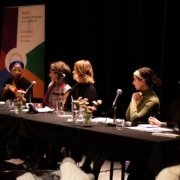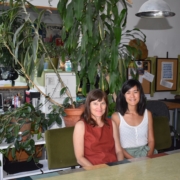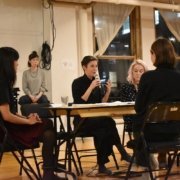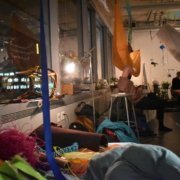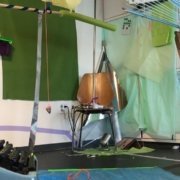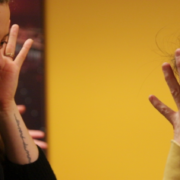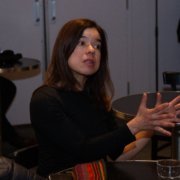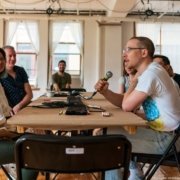How Can We Repair? Strategies for Resilience from Performative Discussion on “burnout”
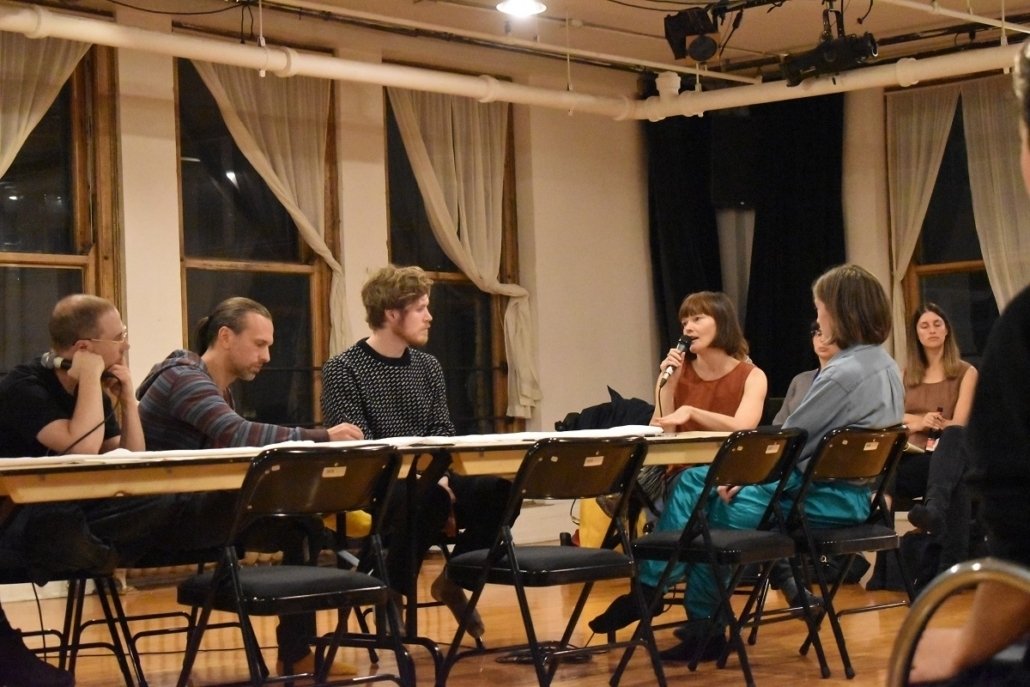
Last week, we published a summary of the first event in our Creative Resilience: Exploring Arts & Health series, the Performative Discussion on burnout at Studio 303. The discussion dealt with key issues such as how to cope with burnout in a social and economic system that is never done extracting value from people and human experience. This week, we’re sharing a few suggestions participants offered on dealing with burnout. The strategies described below are captured from the discussion, and are not meant to be understood as solutions for burnout, as much as they are mechanisms to cope and assert practices that could contribute to shaping healthier ways of relating and creating. As we noted in last week’s summary, meaningful solutions need to come with substantial social and economic change.
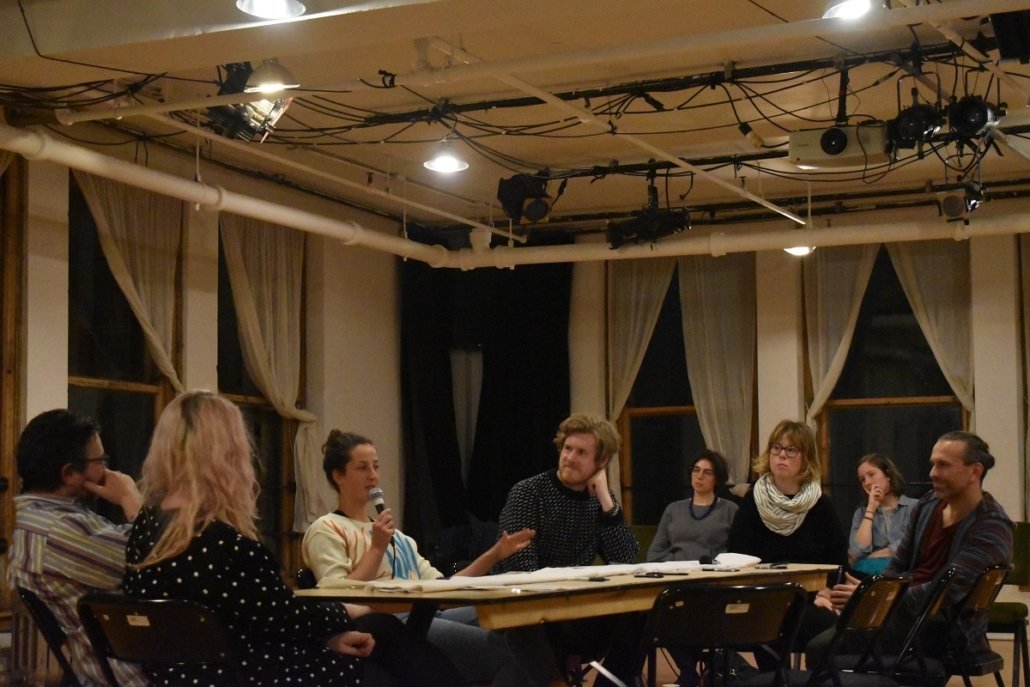
Transparency around Compensation
Participants in the discussion noted that there is limited public information about artist fees. Artists feel that the incentive is currently on them to find it, but it is not always accessible to find or interpret. This disempowers artists from demanding equitable compensation, and creates cultures of silence around what is considered fair within artistic disciplines. Participants in the discussion found that making standard artists fees more accessible and available for artists across disciplines would help enforce pay equity, and empower artists to feel comfortable demanding fair compensation.
Participants also asked: how do we redistribute the information and resources that are already there, in a wider and more consistent way? One of the proposed strategies was rediscovering the role and political power of unions and support associations for artists.
Skills Development
By choice or circumstance, very few artists support themselves through an income from art on a full-time basis, or over the course of their lives. Participants in the discussion emphasized the need to develop strategies and pragmatic ways for artists to find economic stability without wholly depending on selling their artwork or creative labour.
Participants described a clear need for organizations to deliver programs for artists to receive supplementary employment skills in Quebec in order to better support themselves and retain economic independence. It is not always the case that artists are able—or even want—to make living wages off of their artwork, or adapt their practices to market values. Participants considered what the role of existing organizations like ELAN or Emploi Quebec, might be to provide that training or funding for artists in ways that supplement artistic labour.
Wealth Redistribution
Participants found that artists’ creative energies could be essential for inspiring alternative economic models. Where artistic labour mimics the wealth inequalities under capitalism, participants suggested that successful artists—who make millions off of exhibitions, auctions, and private collections—could more directly redistribute the profits of their work to artistic communities. More broadly, participants found that artists could consider economic models of mutual exchange of resources, tools or skills that would create a culture of accessibility and collective support.
Participants also brought up creative initiatives like Wages for Facebook—inspired by the Wages for Housework movement of the 1970s—as a means to validate the digital labour that often feels like a necessary part of networking and promotion. Compensation for digital labour would challenge the normalization of free work for corporations that profit off of owning artists’ data and social profiles.
“Capital had to convince us that it is a natural, unavoidable and even fulfilling activity to make us accept unwaged work. In its turn, the unwaged condition of Facebook has been a powerful weapon in reinforcing the common assumption that Facebook is not work, thus preventing us from struggling against it. We are seen as users or potential friends, not workers in struggle. We must admit that capital has been very successful in hiding our work. By denying our Facebook time a wage while profiting directly from the data it generates and transforming it into an act of friendship, capital has killed many birds with one stone.”
Excerpt from Wages for Facebook manifesto.
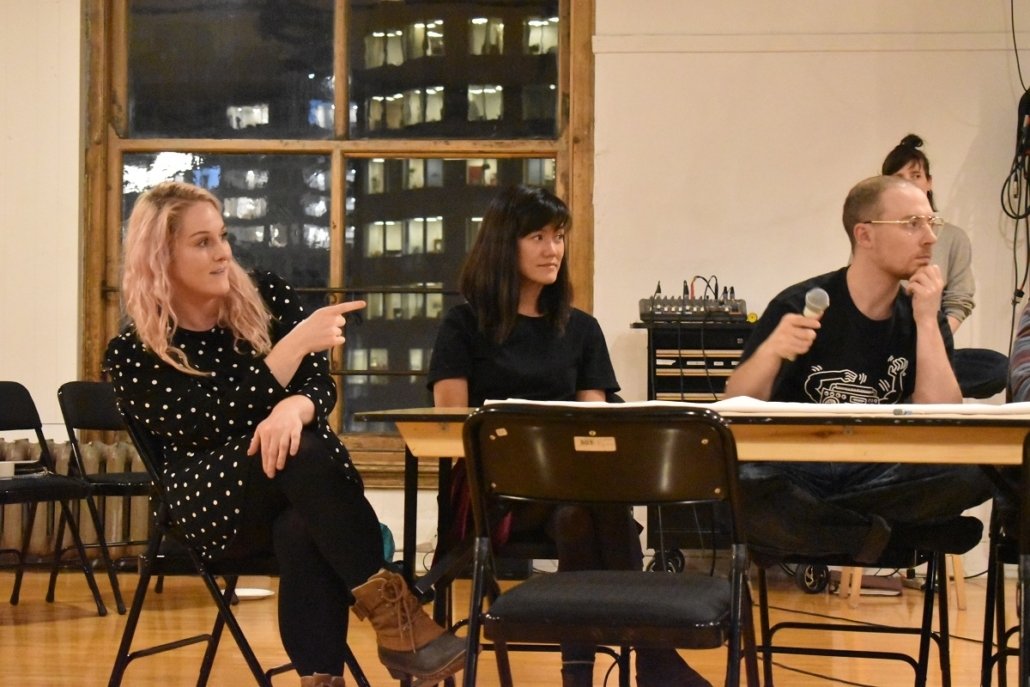
Funding and Valuation
Participants agreed that it is important to challenge how the capitalist logic of constant production and expansion is embedded within arts funding organizations. Participants agreed that solutions can’t solely come from arts councils. “Institutions can play a role,” said one participant, “but there has to be a shift in the economy”.
Artists demanded greater transparency around the valuation process of grants: when receiving grants, do artists get equitable, living wages, or do these grants just serve as a price-tag on a finished “product”? Participants also discussed how grant juries should be more critical of how funding allotment often prioritizes the feasibility and material value of a project over the ethical value.
Producing more for less is unsustainable. Sustainability does not always mean recreating, but rather scaling back to what is already working. Participants agreed that this paradigm shift in needs to involve everyone—including funders and presenters—and there needs to be measurement and accountability to track whether changes to funding models actually work.
Time Management
Participants also spoke about the importance of time management for artists to stay organized and grounded. Time management techniques could help while dealing with burnout, but also—by sustaining these practices—can play a role in preventing future burnout just by contributing to the artist’s awareness of priorities and workload.
One proposed strategy was developing a system of tracking hours of doing promotion compared to hours dedicated to creative work. Creating a simple log could be means for artists to hold themselves and other people accountable.
At the same time, participants raised important critique around this compartmentalization of time. “This way of looking at hours of the days and measuring those hours is also part of capitalism,” participants noted, “and part of a structure that will never serve us, regardless of how we make up our time within it.” Participants discussed the importance of developing awareness of how environmental changes affect us, how seasons might affect the experience of stress, and gently sensitizing to the necessary and natural changes in schedules that aren’t totally regimented.
The Offline Shift
With so much pressure to maintain visibility and marketing online, participants suggested moving away from social media as a primary space for cultivating community and sharing resources. Taking life offline is a challenge, participants agreed, but cultivating meaningful connections outside of social media is a way to nourish a more genuine sense of community and support networks.
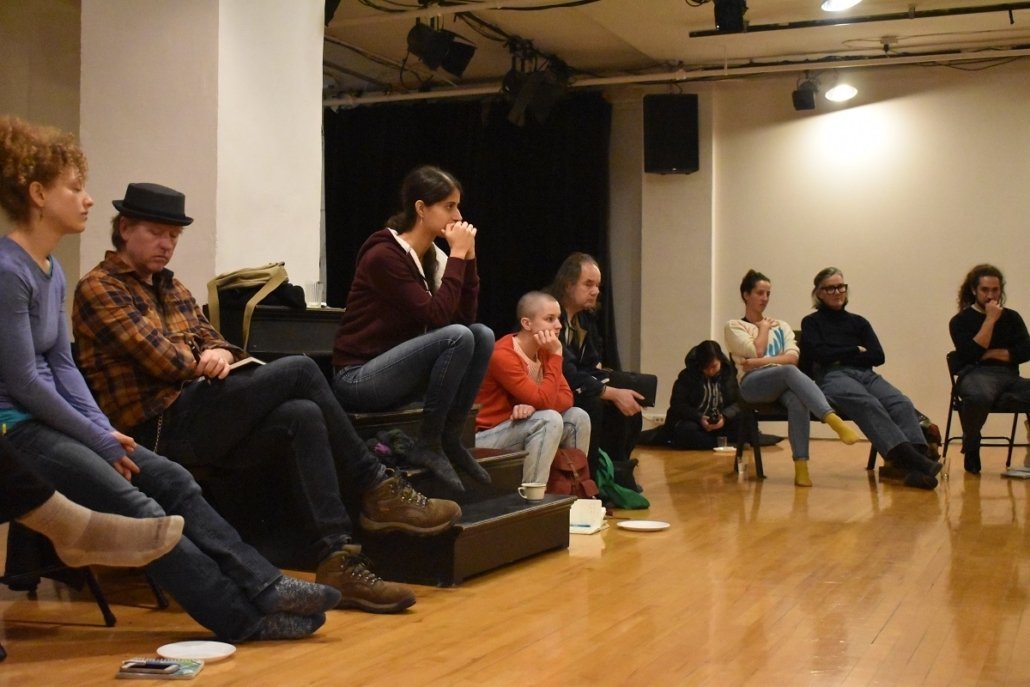
Informal and Alternative Use of Space
Public and private spaces can be reimagined in ways that offer connection rather than isolation. Participants agreed that the isolated nature of many forms of creative work is all the more reason to come together over food or just socializing, and not always with an explicit intention to network or exploit a community for personal gain. “Sometimes what we need,” participants described, “is a hangout, a potluck, something unregulated, that doesn’t need to feel just like work.”
Artists were also excited by the idea of hosting more topical events where artists can come together to speak about issues, challenges, and strategies without judgement, but in less formal structures. Whether these events would be facilitated by arts organizations or independently, participants agreed that these topical events could offer spaces of tangible support and connection, and cultivate resilience in artist communities.
Community Healing
Participants found there was a dire need for community healing spaces, such as clinics that work specifically with artists. Some of the services that were identified as specifically in demand for artists included psychotherapy, acupuncture, massage, which are often dismissed as frivolous or disconnected from clinical medicine. These services are essential for those who work with their bodies, push physical limits, and accumulate strain and injury—as well as those whose creative work puts enormous strain on emotional and mental health. Participants agreed that increasing access to treatment for artists was important, and emphasized the need for more spaces for community healing in Montreal.
Connection
“Art is seldom born out of sitting in a room on your own, in front of a blank page, without the inspirations of other people,” said one participant. As discussed in the summary, when artists don’t have time and are unable to connect with other people and discover new art and experience, we lose a vital sense of connection.
“Recognize that sensitivity and the act of creating under a capitalist system are incredible,” participants said. Just as it is a source of inspiration, community is also a space of regeneration. Participants found that it is essential for artists to learn to ask for help.
Mindfulness
The discussion often came back to shifting the balance from thinking about how creative labour is draining, to acting on strategies to replenish. This could mean developing a deeper understanding and appreciation of one’s own skills, as these are what give us energy. Participants discussed how cultivating rituals and methods to manage anxiety, such as meditation, are essential to staying healthy and developing confidence in one’s own creative work. These nurturing practices are often not considered valuable, but participants emphasized the importance of asking the question: What brings you life?
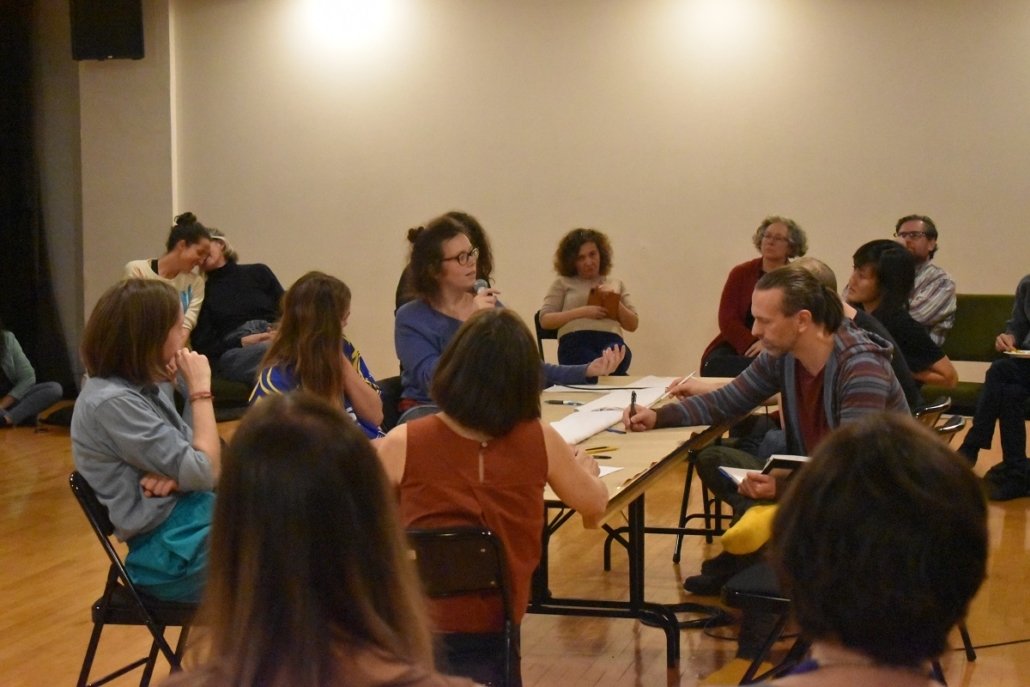
Creative Resilience: Next Steps
This performative discussion offered one way to break the stigma of talking about an issue that deeply affects the emotional and physical health of artists in our communities. But it was also a moment for artists to share ideas, encouragement, and physical space that in itself can be healing.
The upcoming events in our Creative Resilience series delve into creative solutions for artists to explore at the intersection of Arts and Health. These events propose artistic methods to explore and express well-being. The workshop facilitators have practices as both artists, and in healing and therapeutic communities. Our next event is the Fascial Topologies workshop on Tuesday, December 3, led by Csenge Kolozsvari of Senselab. On January 26, Sonio Osorio will lead a workshop on cultivating mindfulness, and we culminate the series with a panel on Access and Alternatives featuring the community healing centre Tiger Lotus, as well as journalist and community activist Aimee Louw.

